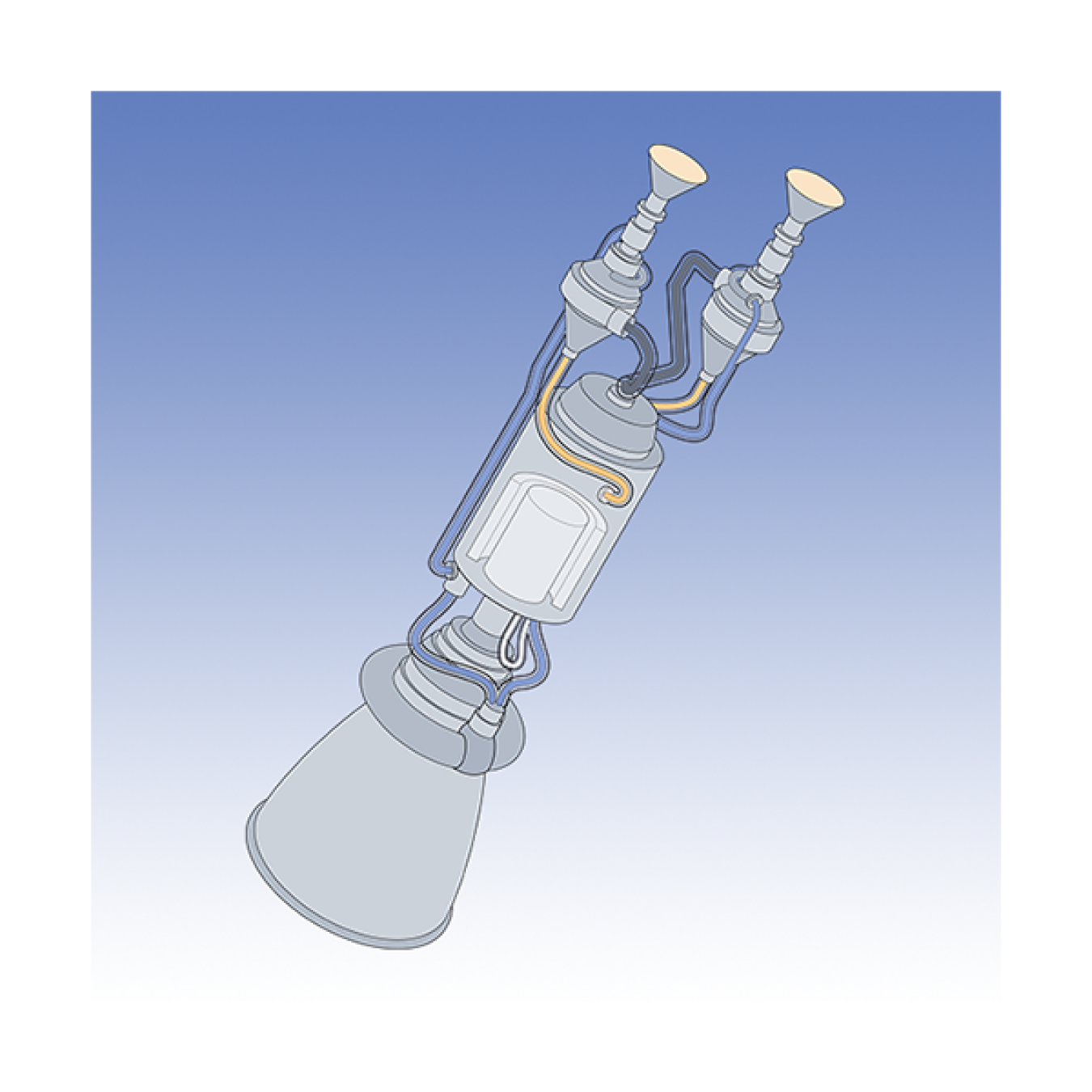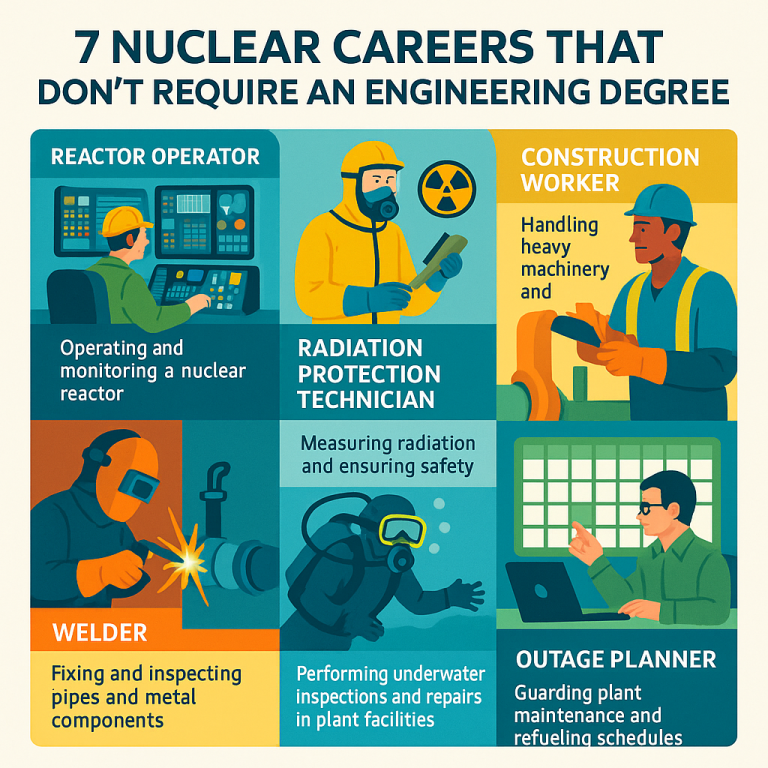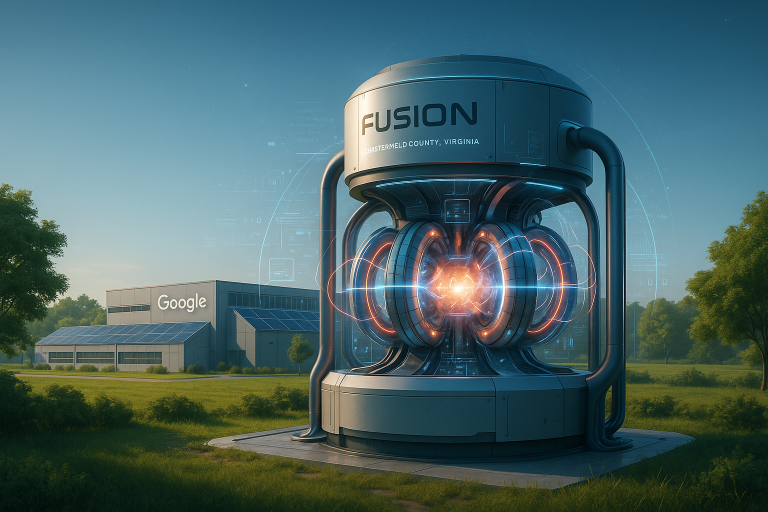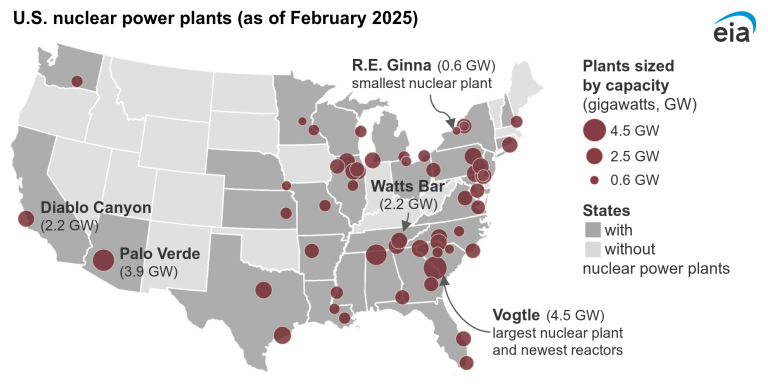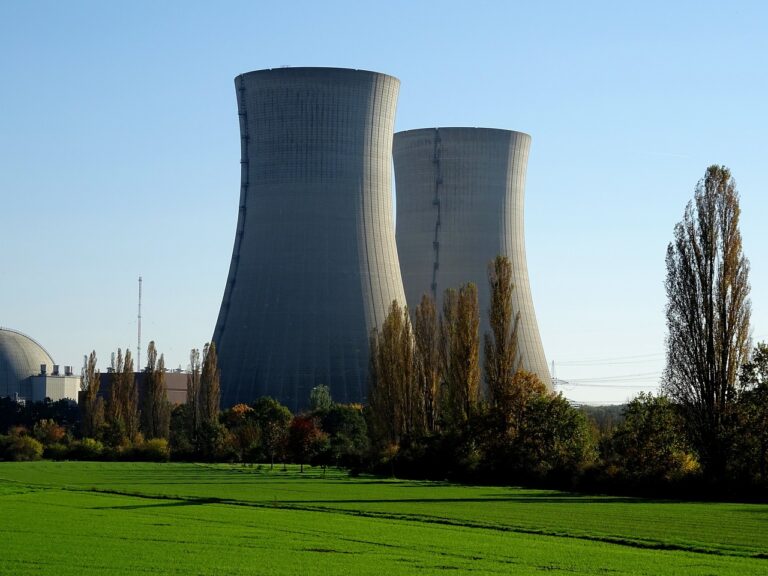Nuclear Thermal Propulsion: Revolutionizing Space Travel
As humanity sets its sights on Mars and deep space exploration, nuclear thermal propulsion (NTP) stands at the forefront of revolutionary space technologies.
Unlike traditional chemical rockets that have carried humans to the Moon, NTP systems promise to transform space travel by offering faster transit times, greater efficiency, and enhanced mission capabilities.
Let’s explore how this technology works and why it could be the key to humanity’s next giant leap into space.
The Basics: How Nuclear Thermal Propulsion Works
At its core, nuclear thermal propulsion operates on a surprisingly straightforward principle. Imagine a super-powered water heater in space, but instead of heating water, it heats hydrogen to incredible temperatures. Here’s the step-by-step process:
First, liquid hydrogen stored at a frigid -253°C (20K) is pumped through the system by high-pressure turbopumps. This hydrogen serves two initial purposes: cooling the rocket’s nozzle and preparing for its main job as propellant. The real magic happens when this hydrogen enters the nuclear reactor core.
Inside the reactor core, uranium fuel elements undergo nuclear fission – the same process that powers nuclear power plants on Earth. As uranium atoms split apart, they release tremendous heat. The hydrogen propellant, flowing through channels in the reactor core, rapidly heats up to temperatures reaching 2,200-2,800°C (4,000-5,000°F) and expands dramatically into a gas.
This superheated hydrogen gas then exits through a specially designed nozzle at extremely high velocities, creating the thrust that propels the spacecraft forward. This process is what engineers call “thermal propulsion,” and it’s far more efficient than chemical rockets.
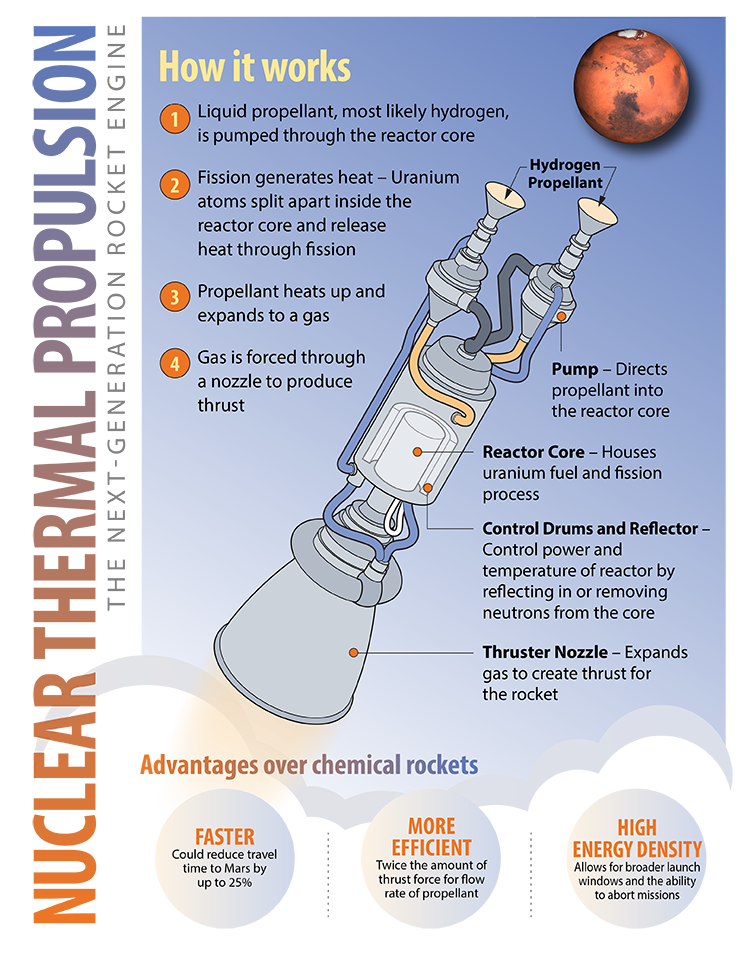
The Engineering Marvel: Key Components
The Reactor Core
The heart of an NTP system is its reactor core, a marvel of modern engineering. Built with a honeycomb-like structure to maximize heat transfer, the core contains uranium fuel elements protected by special coatings to prevent hydrogen corrosion. This design allows for optimal heat transfer while maintaining structural integrity under extreme conditions.
Control Systems
Precise control of the nuclear reaction is maintained through an ingenious system of rotating drums surrounding the core. These drums contain neutron-reflecting material on one side and neutron-absorbing material on the other. By rotating these drums, engineers can fine-tune the nuclear reaction, adjusting power output as needed. This system provides not only precise control but also rapid shutdown capability if required.
The Propulsion Nozzle
The nozzle might look simple, but it’s a technological triumph. Built from advanced carbon-carbon composites, it must withstand both extreme temperatures and intense pressure while efficiently directing the superheated hydrogen to create thrust. Its bell shape is carefully engineered to maximize efficiency in the vacuum of space.
Why It’s Better: The Advantages
Nuclear thermal propulsion offers several significant advantages over traditional chemical rockets:
Superior Efficiency
NTP systems achieve twice the efficiency of the best chemical rockets. Scientists measure this efficiency in “specific impulse” – essentially, how much thrust you get from your propellant. While chemical rockets top out at about 450 seconds of specific impulse, NTP systems target 900 seconds. This dramatic improvement means spacecraft can travel farther using less fuel.
Faster Travel Times
The increased efficiency translates directly into shorter travel times. A journey to Mars could be reduced by up to 25%, significantly decreasing astronauts’ exposure to cosmic radiation and other space hazards. This reduction could be the difference between a feasible mission and an unnecessarily risky one.
Greater Mission Flexibility
NTP systems provide broader launch windows and the ability to abort missions if necessary – options that are limited or impossible with chemical rockets. This flexibility is crucial for complex deep space missions where safety and adaptability are paramount.
Safety and Control: A Primary Focus
Despite initial concerns about nuclear technology in space, NTP systems are designed with safety as a fundamental priority. These rockets won’t be activated until they’re safely in space, using conventional chemical rockets for Earth launches. The uranium fuel used is being developed to require less enrichment, reducing security concerns while maintaining performance.
Modern NTP designs incorporate multiple layers of safety systems:
- Redundant control mechanisms
- Autonomous monitoring systems
- Emergency shutdown protocols
- Comprehensive radiation shielding
The Path Forward: Current Development
Today’s NTP development builds on decades of research dating back to the 1960s’ Nuclear Engine for Rocket Vehicle Application (NERVA) program. Current efforts focus on several key areas:
Material Innovation
Scientists are developing new materials capable of withstanding the extreme conditions inside NTP systems. This includes advanced ceramics, composite materials, and novel coating technologies to protect against hydrogen corrosion and radiation damage.
Fuel Development
At facilities like Idaho National Laboratory, researchers are testing new fuel compositions that offer improved performance while meeting modern safety standards. These tests have shown promising results, demonstrating that new fuel designs can withstand the harsh conditions required for nuclear thermal propulsion.
System Integration
Engineers are working on how to integrate NTP systems with other spacecraft components, developing solutions for in-space assembly, refueling capabilities, and multiple restart operations.
Looking to the Future
Nuclear thermal propulsion represents more than just an incremental improvement in space technology – it’s a potential paradigm shift in how we explore space. As we stand on the brink of a new era in space exploration, NTP systems could be the key to making human missions to Mars and beyond not just possible, but practical.
The technology continues to evolve, with ongoing research promising even better performance through improved materials, more efficient designs, and enhanced safety features. As these developments progress, we move closer to the day when nuclear thermal propulsion will power humanity’s journey to the red planet and beyond.
With continued investment and development, these systems could become the standard for deep space exploration, opening up the solar system to human exploration in ways that were previously impossible. The future of space travel looks bright, and nuclear thermal propulsion is lighting the way forward.

